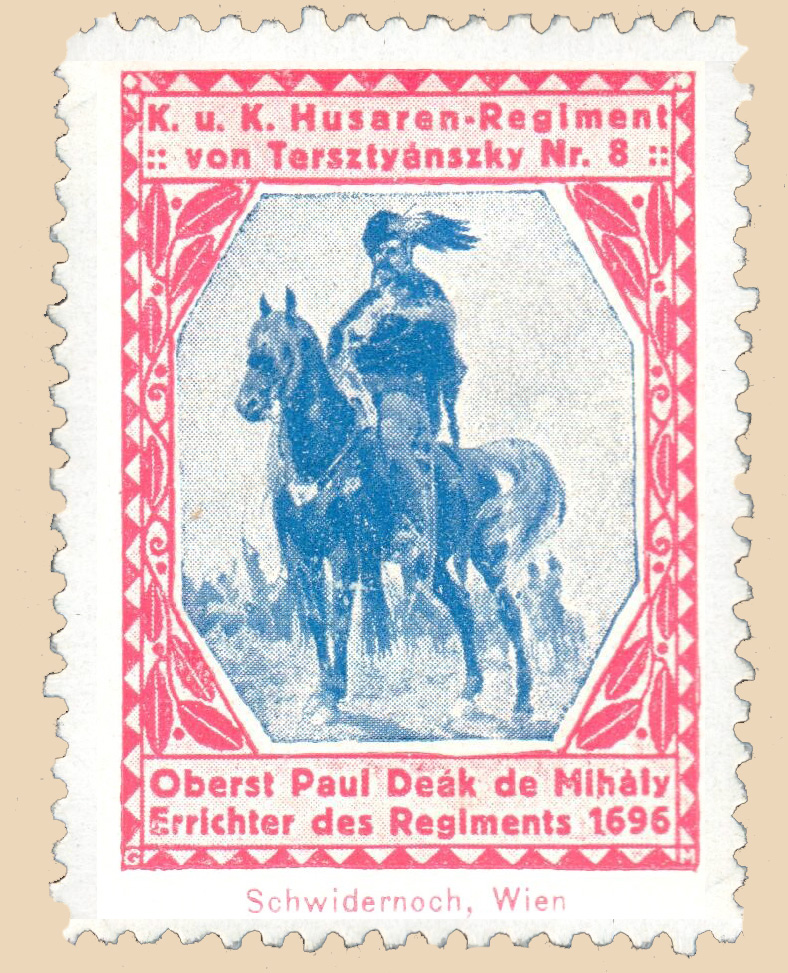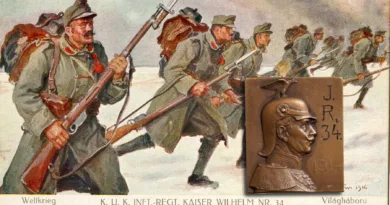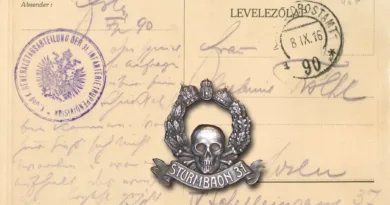8th hussar regiment
The crew of this regiment consisted of chaps from the Danube-Tisza area Central Hungary. The cadre was in Szabadka, but the battalions were stationed in Kecskemét and Cegléd. According to the battle order of the regiment, the cavalry squadrons supplemented the infantry divisions of the area (divisions 31, 32 and 40). In the Great War, only a small portion of the cavalry regiments were employed together, in cavalry divisions. Most of the regiments were disbanded and assigned to the infantry, where they had to perform reconnaissance and courier duties. The 8th Hussar Regiment also had such a position.
The colors of the regiment’s beautiful badge refer to the blue hussar jacket and the red shako. The color scheme of the hussar regiments was different. Most of the cavalry badges, like the one shown here, were beautifully colored in fine enamel. This regiment had another enameled badge decorated with oak leaves.

The letter seal attached to the post shows a picture of the founder of the regiment, Colonel Pál Deák of Mihályi. Sources point out that he and his regiment were the suppressor of the anti-Habsburg Hegyalja uprising that took place in 1697, before the arrival of the later famous Hungarian freedom fighter Ferenc Rákóczi II. Deák was wounded during the fighting. In 1701 he and his regiment was commanded to Italy, where in 1704 he was taken prisoner by the French. He was commissioned to form the French hussar weaponry. In 1706 he was able to return to the service of the Austrian emperor. He died not long after. He could no longer take part in the Rákóczi War of Independence.

The letter seal also mentions the regiment owner operating during the Great War, Colonel General Károly Tersztyánszky. He was born in 1854 and was a cavalry general from 1913. At the same time, he became the last owner of the 8th hussar regiment. Tersztyánszky commanded higher troops, such as the army group carrying out the attack to liberate Przemysl in the winter of 1914, later the Balkan forces and then the 3rd Army. He was replaced and retired on December 1, 1918, due to his political conflicts and battlefield failures. He died in 1921.




